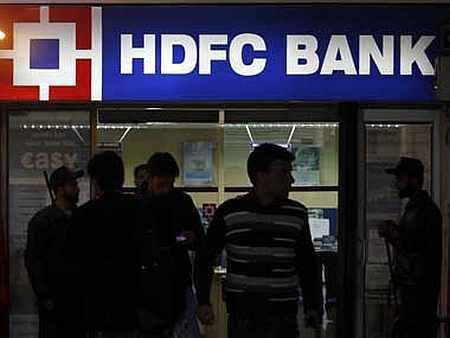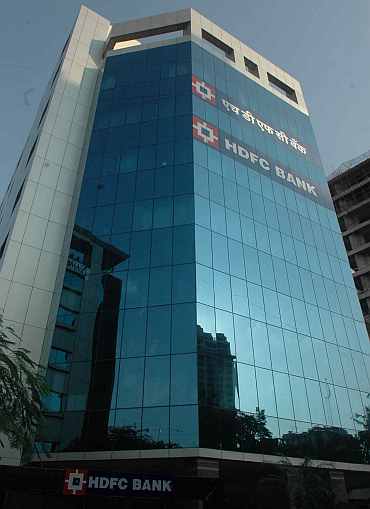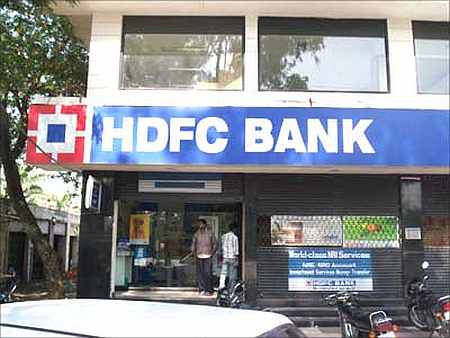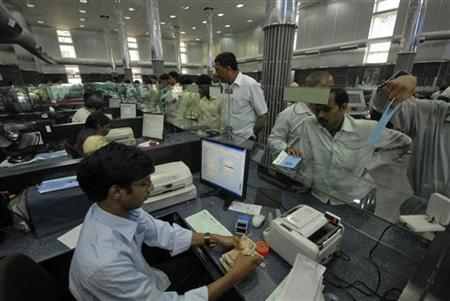
A month can often be a long one in the world of financial analysts. On May 7 this year, broking firm Macquarie's analysts Suresh Ganapathy and Parag Jariwala assigned 'outperform' rating to Housing Development Finance Corp (HDFC), with a 12-month target price of Rs 775 per share due to what they called solid fundamentals, stable spreads and strong growth.
A month later -- June 14, to be precise -- the same analysts changed their stance dramatically and assigned an 'underperform' rating, with a 12-month target price of Rs 550 per share. They also questioned its accounting practices, saying it might have inflated earnings and return on equity.
That's unfamiliar territory for HDFC, but the housing finance major rebutted the report immediately and chose what it does best -- let its numbers do the talking.
...

Since the first quarter earnings announcement were due in July, HDFC cited its April-June quarter results, which were in line with the Street's expectations, despite higher foreign exchange loss.
It reported 19 per cent profit growth and maintained its spreads at 2.3 per cent. This indicated the pricing power it enjoyed.
The 19 per cent loan growth on a year-on-year basis in the backdrop of high interest rates gave confidence to the HDFC management to declare there is no slowdown for them.
Though the Macquarie analysts kept the 'underperform' rating on HDFC, they later softened their tone considerably and noted the retail book was gathering momentum.
...

It made no reference to the accounting practices and blamed the media for making an unjustified noise.
It was clear that neither investors nor the analyst fraternity paid heed to the charges regarding accounting practices, as the stock outperformed the Sensex.
HDFC stock was up more than five per cent between June 14 and July 30, when the Sensex rose 2.8 per cent. Of 51 brokerage houses that cover HDFC, only three have a 'sell' call -- Kotak Securities, Ambit Capital and, recently, Macquarie.
...

No mismatch
Historically, HDFC contended with a 2.15 to 2.35 per cent spread and no deviation was allowed from this range, despite wide fluctuations in interest rates across booms and recessions. Post the global financial crisis, for example, interest rates were reduced by around 550 bps and subsequently increased between March 2010 and October 2011.
According to analysts who track the company closely and interact with the management frequently, HDFC never takes a view on the interest rate. It might have a view but the view is not used as an input to decide on lending rates.
Its borrowing tenure is exactly matched to its lending tenure. Lending short and borrowing long -- a practice rampant among banks -- is forbidden for the largest home financier of the country. The philosophy is to have no asset-liability mismatch.
...

"HDFC's ability to maintain spreads at 2.3 per cent with a 19 per cent loan growth suggests a benign competitive environment in mortgages," said broking firm CLSA in the post earnings research note.
The firm further noted spreads were stable despite a rising share of high cost retail deposits in total funding, and a decline in the share of corporate loans.
Another broking firm, Morgan Stanley, noted HDFC had stepped up bond funding to take advantage of lower funding cost.
...

Beating the slowdown
At a time when the home loan growth has remained in single digits for two years, HDFC was able to deliver around 20 per cent growth in disbursals. The average ticket size for fresh home loans is Rs 20 lakh for HDFC.
Data published by the Reserve Bank of India showed home loans -- that are classified under the priority sector which are loans up to Rs 20 lakh -- registered a growth of 8.8 per cent for the year ended May 18 while in the previous comparable period the growth was even less at 7.4 per cent.
The home financier has better industry growth despite its strategy of not gunning for market share. It is true that loan growth has come down from 25 per cent annually, registered in the pre-crisis period -- mainly due to base effect and deterioration in overall economic environment -- but it will still be around 20 per cent.
...

The closer look at the growth of the loan book shows there was strong demand from all markets, except for Mumbai, in the last one year. In addition, the growth of the loan book was driven more by individual loans, which had grown by 22.5 per cent, which was noted as positive by the investors.
This traction for individual retail loans has raised the hope that the home financier will able to achieve a CAGR of over 20 per cent till the end of financial year 2014.
Its focus on the retail segment also augurs well for a company which is always vigilant about asset quality, reflected from the fact that non-performing asset ratios have declined for the last 30 quarters.
...

Sans aggression
In a country that has seen fierce competition from private sector lenders like ICICI Bank and later from a government-run lender, State Bank of India, what HDFC believes is that running for market share is not a good strategy in the lending business.
While ICICI burnt its fingers for being aggressive during 2003-2008 and SBI has drawn flak from the regulator for its fixed-cum-floating home loan scheme, HDFC's strategy is to become steady, reflected by growth momentum slowing -- in line with the overall economic activity -- as the interest rate peaks which impacts repayment capacity.
Though HDFC also offered the dual rate scheme, following SBI, it was launched after a good eight-nine months, during which the interest rate scenario became conducive.